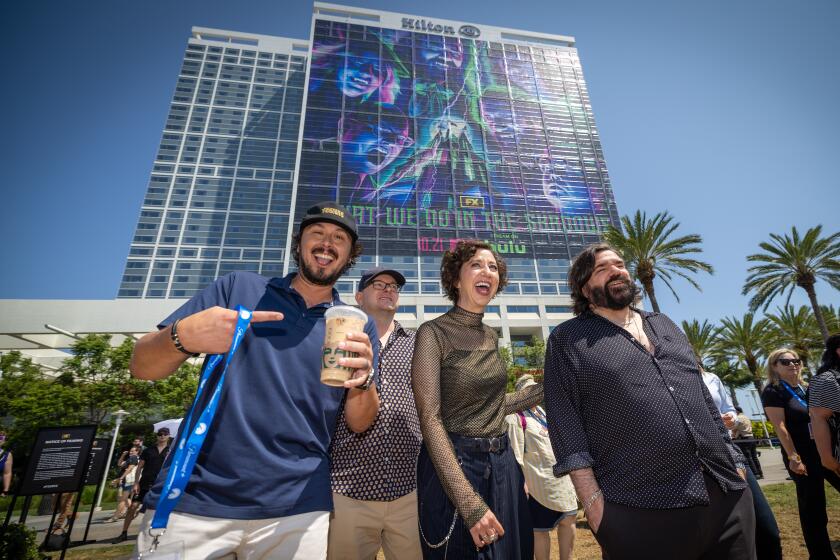A fearful disease and how it was stopped
One of my earliest memories is of standing in line, in some sort of meeting hall, waiting to be given a sugar cube soaked in polio vaccine. Polio was all but eradicated in America by the time I actually knew what it was, but its cultural effects still resonated: I remember Gumby, the little clay boy, being put in an iron lung (used to help polio victims breathe) in one episode; it was one of the most disturbing images of my childhood. And there was the March of Dimes, into which we were enlisted as student-citizens, and whose origins are told in “The Polio Crusade,” airing tonight as part of the PBS series “American Experience.”
It’s a neat, gripping social history of a disease that ranked behind only the atom bomb among midcentury American fears. Although it was not the most dreadful disease of its day -- paralysis was rare, and death very rare -- it played upon the public imagination as a despoiler of youth (and of the summertime, when it was most prevalent). Images here of very small children walking with leg braces and canes are still heartbreakingly potent.
Writer-director Sarah Colt emphasizes the Anytown aspects of the disease, centering her film in sitcom-clean hamlets and suburbs. (“My legs gave out as I was peddling my ice cream cart home for lunch,” one victim remembers.) Indeed, part of what made polio so fearful was its created-equal classlessness: “I have no prejudices,” says polio, given shape in an archival short film as a skulking shadow targeting white, black and Asian children. “I’m quite impartial.”
And as the malady that was thought to have lamed Franklin D. Roosevelt -- there is some dispute now as to whether it was in fact polio Roosevelt contracted -- it made a powerful enemy: The president personalized and, in a sense, nationalized the disease, drafting his old law partner Basil O’Connor to lead the fight. It was O’Connor’s inspiration to build support from millions of small donations: In its first year, and in the teeth of the Depression, the March of Dimes raised $1.8 million.
It was the March of Dimes that funded the research of Jonas Salk, whom O’Connor met on a transatlantic crossing and who shared his sense of haste. Salk’s fast-track vaccine, based on a “killed virus” (and first tested on orphans and the “feeble-minded”) was the first vaccine to go into production, though not without mishap: A bad batch actually infected recipients with polio.
Dismissive rival Albert Sabin -- whose slowly developed, orally administered “live vaccine” is the one I would have taken -- was tortoise to Salk’s hare.
Both won in the end. And what “The Polio Crusade” does not relate -- and it’s perhaps the most remarkable aspect of this story, almost unthinkable now -- is that neither patented his cure.
--
--
‘American Experience: The Polio Crusade’
Where: KCET
When: 9 tonight
Rating: TV-PG (may be unsuitable for young children)
The complete guide to home viewing
Get Screen Gab for everything about the TV shows and streaming movies everyone’s talking about.
You may occasionally receive promotional content from the Los Angeles Times.




